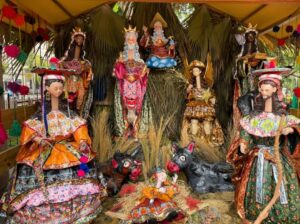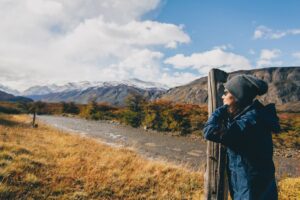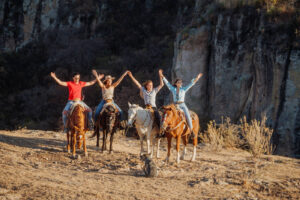It’s no secret that Cusco, Peru is home to some of the most spectacular hiking trails in South America. After all, this region cradled the mighty Inca Empire. They left behind the awe-inspiring Qhapaq Ñan, a vast 20,000-mile network stretching from Colombia to Chile. Looking to explore the rich heritage of the Inca trails?
Today, travelers of all fitness levels can relish in this unique opportunity. Expore the imperial city of Cusco and the majestic Sacred Valley by walking in the footsteps of the Incas. Imagine spending a full-day or multiple-day hike with Explore Inca. Stumbling across azure lakes, multi-level salt flats, waterfalls, lesser-known ruins and incomparable citadels like Machu Picchu. This is only possible when you visit Peru. Venture to the following best day hikes in Cusco, listed in order of difficulty level. And, if you’re keen to learn about South America’s other trail gems, click here.

1. Las Chullpas: Your First Taste of Inca Legacy
Stretch your legs after spending a day or two acclimatizing to the high altitude in the Sacred Valley! Las Chullpas, also known as Las Colcas, are found in a mountainside of Urubamba. Is is about 15 minutes by car from the town’s main plaza. A series of chullpas, or stout stone towers, were constructed with funerary purposes for higher-up Incas.
The hike is short (about 30-40 minutes for new arrivals to the Cusco region) and has a few steep climbs but the view from these lesser-known Inca ruins is a treat. Consider this your warm-up hike.
2. Poc Poc Waterfall: Dive into Textile-rich Tales
This hike begins in the textile-rich town of Chinchero (3,762m) and ends in the Sacred Valley, specifically in the town of Urquillos (3,100m). Though mostly downhill, the Chinchero-Urquillo route is ideal to work on stamina as it lasts about 4 hours at a relaxed pace.
The trailhead is located at the base of the Chinchero ruins, which means you can tour the archaeological site and pick up a few alpaca knits before making your way down to the Sacred Valley. Follow well-marked trails down to Poc Poc waterfall, a refreshing cascade albeit nothing grand in size. As you near the town of Urquillos, the local gardens and adobe homes on the side of the trail are simply charming.
3. Tipón Ruins: A Celebration of Inca Engineering
An Inca masterpiece of engineering, the Tipón ruins are one of the few archaeological sites in Peru where the water irrigation system operates to this day. Located in the Choquepata community, some 14 miles southeast of Cusco city, the highest point of the ancient ruins reaches 3,800 masl. Less than a mile and a half, the uphill hike takes just 20 minutes but the true joy is walking around these expansive ruins.
Covering 240 hectares, the purpose of the Tipón ruins is up for debate yet it shows similar architectural features to other important Inca sites, such as Machu Picchu. From trapezoidal doors, agricultural terraces, and finely carved stones, this is a majestic piece of Peru’s history without the crowds.
Curious about its history? Discover more about its archaeology here.
4. Saywa Mountain: Embrace the Cusco Panorama
This Urubamba hike is a great way to start testing your climbing legs. Winding up the side of Saywa Mountain, this trail begins just 10 minutes from the Urubamba Plaza. At the top are two Inca pillars and incredible views of the town below and snowcapped Chicon above.
This is a full-day excursion that can take 5-7 hours to complete the nearly 7-mile out-and-back loop. There are no official trail markers but the trail is fairly visible. Saywa Mountain is especially stunning during or right after the rainy season when the hillsides are verdant and the flowers are in bloom.
5. Huchuy Qosqo: The Lesser-known Cusco
Quechua for ‘Little Cusco,’ Huchuy Qosqo (also spelled Yuchuy Cuzco) is an archaeological site just above the Sacred Valley town Lamay. Off-the-beaten-path, this trek takes visitors through traditional villages and Andean landscapes before reaching the fascinating ruins.
Huchuy Qosqo may have served as a military or administrative center and present are collcas (small buildings used to store and preserve food). The site is yet another example of the advanced architecture of the Incas. While enjoying this pleasant hike, it is not rare to come across llamas and alpacas roaming the area.
6. Pisac Ruins: A Steep Dive into Inca’s Past
From a distance, the hike up the Pisac ruins would appear to be a walk in the park. But a series of steep steps and hillsides turn this into an intermediate-advanced difficulty level. Luckily, it only takes 45 minutes to 1.5 hours to reach the top (depending on your fitness level and acclimatization) where a spectacular panoramic view of the Andes mountains awaits.
Less than 20 miles from Cusco city, Pisac is a beautiful valley town that attracts tourists with its artisan market and stunning ruins. Researchers believe the ruins were built by the Incas no earlier than 1440 and may have served a defensive purpose due to their elevated position.
7. Humantay Lake: Azure Beauty at High Altitude
Laguna Humantay is a piercing blue lake is situated at more than 4,000 masl at the bottom of a glacier. Though the hike up takes just 1 hour for most, the climb is steep, with a gain of 400 meters. Be sure to take plenty of breaks along the way to catch your breath!
A three-hour bus ride from Cusco city, Humantay turns such an impressive hue of blue due to the minerals and algae present (in order to protect these elements swimming is not allowed). This lake is also witnessed by those who complete the arduous Salkantay trek (4-6 days).
8. Maras to Moray: Salt, Science, and Supper
From salt mines to agricultural terraces, this 7-hour hike takes you from one Sacred Valley hotspot to another. Beginning in Media Luna (found between Urubamba and Ollantaytambo), you will ascend to the breathtaking Maras salt mines. These pools of salt have been around since pre-Inca times and are actively managed by local families.
After ogling the bright squares of white and pink, it’s time to continue on to the Moray Inca ruins. These circular terraces of varying depths were likely used for agricultural research. And, if your feet get weary, pause and dine at MIL, where Peruvian culinary genius, Virgilio Martinez, weaves magic. With photos and a picnic, this excursion can take up to 10 hours.
9. Inti Punku: The Astronomer’s Delight
Meaning Sun Gate in Quechua, Inti Punku is an ancient Inca construction likely used for astronomical observation as well as a secure place for entry into the Inca Empire. Not to be confused with the Sun Gate in Machu Picchu, Inti Punku in Ollantaytambo faces the impressive snow-capped mountain, Veronica, the highest in the Urubamba mountain range.
Beginning in the Cachitccata community, hikers will make a steep, zig-zagging ascent for approximately 3-4 hours. Along the way, you will pass a small group of ruins and “piedras cansadas”—large rocks that were apparently too large for the Incas to carry for construction.
10. Rainbow Mountain: Nature’s Palette
Locally referred to as Vinicunca, Peru’s Rainbow Mountain sits at 5,200 masl—an altitude that makes for a difficult 3-hour climb. A two-hour drive from Cusco city, Rainbow Mountain can even be reached by horseback, though you will have to dismount for the last climb to the top.

Passing herds of alpaca and llama along the way, hikers follow a gradual incline at the beginning before coming across steep mountainsides. Stripes of violet, red, turquoise and yellow paint the so-called seven-colored mountain, a true reward for those who take on the challenge!
Weather conditions can complicate many of these hiking journeys, so be sure to check with your Explore Inca travel designer about planning your hike in the Cusco area: sales@exploreinca.com
Table of Contents
Toggle



